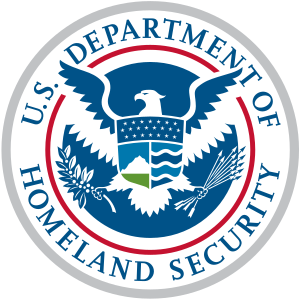FEMA Grant Authorized Equipment List (AEL)
The AEL is a tool used to determine allowability of equipment types for FEMA’s Preparedness Grant Programs. The AEL is used to facilitate more effective and efficient procurement of items under specific FEMA Preparedness Grants by informing grantees of equipment items allowed under specific grant programs and relevant programmatic considerations associated with each equipment item. The AEL consists of 21 equipment categories, which are then divided into sub-categories, and then individual equipment items.
| TSA Baggage Search Overtime Pay Would Qualify For Grant Money Photo Credit WSJ |
FEMA provides state and local governments with preparedness program funding in the form of Non-Disaster Grants to enhance the capacity of state and local emergency responders to prevent, respond to, and recover from a weapons of mass destruction terrorism incident involving chemical, biological, radiological, nuclear, and explosive devices and cyber-attacks.
Access Authorized Equipment List (AEL) file.
FY 2014 Preparedness Grants | Allocation Announcement
- Information Bulletin No. 398a - Update to Fiscal Year 2014 Preparedness Grant Programs Allocations Announcement
- Information Bulletin No. 398 - Fiscal Year 2014 DHS Preparedness Grant Programs Allocation Announcement
- FY 2014 EMPG: FY 2014 EMPG Program Fact Sheet
- FY 2014 HSGP: FY 2014 HSGP Fact Sheet
- FY 2014 IPR: FY 2014 IPR Fact Sheet
- FY 2014 NSGP: FY 2014 NSGP Fact Sheet
- FY 2014 PSGP: FY 2014 PSGP Fact Sheet
- FY 2014 TSGP: FY 2014 TSGP Fact Sheet
- FY 2014 THSGP: FY 2014 THSGP Fact Sheet
FY 2014 Preparedness Grants | Funding Opportunity Announcement
- FY 2014 EMPG: FY 2014 EMPG Program Funding Opportunity Announcement
- FY 2014 HSGP: FY 2014 HSGP Funding Opportunity Announcement
- FY 2014 IPR: FY 2014 IPR Funding Opportunity Announcement
- FY 2014 NSGP: FY 2014 NSGP Funding Opportunity Announcement
- FY 2014 PSGP: FY 2014 PSGP Funding Opportunity Announcement
- FY 2014 TSGP: FY 2014 TSGP Funding Opportunity Announcement
- FY 2014 THSGP: FY 2014 THSGP Funding Opportunity Announcement
- Assistance to Firefighters Grant Program (AFG)
Please note: The FY 2014 Assistance to Firefighter Grants (AFG) are awarded on a rolling cycle, with all funds awarded prior to September 30, 2015.
FY 2014 Preparedness Grants | Additional Information
- FY 2014 Continuing Training Grants (CTG) Program Frequently Asked Questions (FAQs)
- FY 2014 Continuing Training Grants (CTG) Program Fact Sheet
More Information Wikipedia: http://en.wikipedia.org/wiki/Homeland_Security_Grant_Program
Homeland Security Grant Program
From Wikipedia, the free encyclopedia
Homeland Security Grant Program (HSGP) is a program in the United States established in 2003 and was designated to incorporate all projects that provide funding to local, state, and Federal government agencies by the Department of Homeland Security.[1] The purpose of the grants is to purchase surveillance equipment, weapons, and advanced training for law enforcement personnel in order to heighten security.[1][2] The HSGP helps fulfill one of the core missions of the Department of Homeland Security by enhancing the country's ability to prepare for, prevent, respond to and recover from potential attacks and other hazards. The HSGP is one of the main mechanisms in funding the creation and maintenance of national preparedness, which refers to the establishment of plans, procedures, policies, training, and equipment at the Federal, State, and local level that is needed to maximize the ability to prevent, respond to, and recover from major events such as terrorist attacks, major disasters, and other emergencies.[3][4] The HSGP's creation stemmed from the consolidation of six original projects that were previously funded by the Office of State and Local Government Coordination and Preparedness.[5] The HSGP now encompasses five projects in the program: State Homeland Security Program, Urban Areas Security Initiative, Operation Stonegarden, Metropolitan Medical Response System Program, and Citizen Corps Program.[3] During the 2010 fiscal year, the Department of Homeland Security will spend $1,786,359,956 on the Homeland Security Grant Program.[3]
Funding controversy[edit]
Some criticism of the Homeland Security Grant Program has come from the distribution of funds. Not unlike the highway systems, education, etc., the HSGP distributes 60% of their funds on the basis of population and the other 40% is evenly spread across all recipients regardless of population.[5] Wyoming for instance, despite being the least populous state, received more funding per capita in homeland security grants than any other state in 2004.[5] At $45.22 per citizen of the state, Wyoming received more than four times the amount of funding per citizen given to either California or New York.[5] Another criticism has come for the Government Accountability Office (GAO) in regards to the risk-based grant methodology.[11] Although the GAO concluded that the overall risk-based methodology (threat, vulnerability and consequences) was reasonable, the absence of a proper way to measure variations in vulnerability greatly reduce the value of the vulnerability portion of the assessment.[11] Ultimately, they concluded that the vulnerability measure as part of its risk analysis model should be amended to better capture variations in vulnerability across the different states and urban areas it assesses.[11]

No comments:
Post a Comment
CAL FIRE NEWS LOVES COMMENTS...
- Due to rampant abuse, we are no longer posting anonymous comments. Please use your real OpenID, Google, Yahoo, AIM, Twitter, Flickr name.